Evolution and its Adversaries (Part-7)
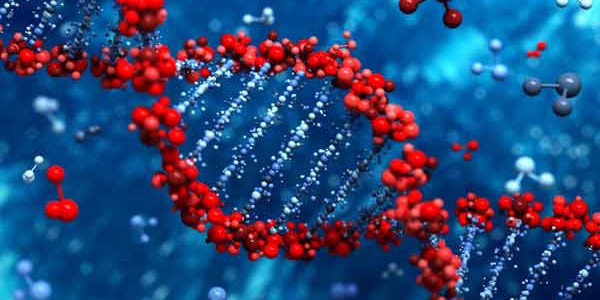
The theory of evolution now incorporates Mendel’s genetics into Darwin’s framework and this combined theory is called Neo-Darwinism. According to this newest description, evolution is driven by chance mutations which affect a few nucleotides of DNA.Desperate for some soul-satisfying all-comprehensive theory, the biologists of the time, one and all, embraced this‘Synthetic Theory of Evolution,’ whole-heartedly, writes SYED IQBAL ZAHEER. Evolutionary Theory through the Ages Darwin had maintained that evolution could only advance in tiny steps, with unnoticeable changes, that accumulated over ages to add up to major differences, which appeared as new species through inheritance. He wrote in The Origin of Species:
“If it could be demonstrated that any complex organ existed which could not possibly have been formed by numerous, successive, slight modifications, my theory would absolutely break down.”
But the fossil record showed that species remained unchanged for very long periods. For instance, bacteria of the first appearance have remained bacteria of the modern times, unchanged over almost 3.5 billion years. Inexplicably, new kinds arise suddenly, arbitrarily, after long breaks. The records were a stunning blow to Darwinian concept, and as should have suffered as Darwin had written, “absolutely breakdown.” But, lacking any other way to understand life and developments on earth, with the condition that the role of any outside agency was to be outlawed, the atheistic scientists, who control the world of science, worked out various ways to either ignore the fossil findings, pooh pooh it, explain it away, or, offer an escape route. In that scenario, Stephen Jay Gould, an American heavy-weight brilliant scientist presented his theory of “punctuated equilibrium.” To quote:
“…a theory inevolutionary biology, which proposes that once species appear in the fossil record they will become stable, showing little net evolutionary change for most of their geological history. This state is called stasis.”
Stephen Jay Gould himself called the discrepancy between the supposed gradualism and the evidence of big steps the paleontologists’ “trade secret.” However, initially popular the idea fell victim to discord. By the end of the 19th century, Darwinism had cracked up. Evolution required new paradigms, new blue prints. Unable to defend, Darwinists began to offer alternatives, and each of them was given utmost respect for supporting an ageing theory. However, August Weisman (d. 1914), pressured by new findings, firmly refuted the idea of inheritance of acquired traits as impossible to happen. But that was the backbone idea of Darwinism. He re-established Natural Selection as the main player that accounted for biological evolution. By the end of the 19th century his amalgamated idea came to be known as “Neo-Darwinism.” Then came the discovery of Mendel’s studies and experiments conducted 15 years ago, on 28,000 pea plants. His findings had remained in neglect until 1900. (He died in 1884). His conclusion that acquired traits could be inherited was a blow to “Neo-Darwinism” which rejected the idea of evolution working through inherited traits. So, biologists, led by Hugo de Vries, brought back heredity as the main player in evolution. They redefined evolution as working through mutations, and more or less did away with Natural Selection as the most important evolutionary process. He and others believed in spontaneous alterations of that modified biological organisms, giving rise to new species. (Mendel had not produced any new species of peas). However, the new defendants of evolution believed that new species originate suddenly. Yet, it wasn’t long before there appeared “the new kid on the block,” (though not a biologist per se), Karl Pearson and his followers who rejected “mutationism” and produced statistical works to show that Natural Selection was the main mechanism at work in evolution through cumulative effects of small, but persisting individual variations, passed on from one generation to another. But they thought that Mendel’s ideas did not play the main role. They were followed by those (Fisher, Haldane, Sewal Wright) who reversed the tables by asserting that Mendel’s laws were fine, and natural selection acting cumulatively on small variations could yield major evolutionary changes in form and function. This overshadowed “mutationism” and led to the integration of genetics and Natural Selection. Neo-Darwinism Three basic principles, then, guide Neo-Darwinism:
- Evolutionary changes occur as a result of randomly happening minute variations, what is known in biology as mutation;
- Natural Selection sifts and sorts that which would be beneficially advantageous to the life-form so that it can produce more offspring than others; and
- The newly acquired traits are passed on through inheritance from generation to generation, allowing for evolution.
Mutation Mutations are physical changes in genes and chromosomes. They may be confined to a single cell or may be transmitted from one cell to another within a multicellular organism, or may be transmitted from one generation to another through mutation in the gametes. Mutations may be caused by natural events within the environment, by action or inaction of DNA repair enzymes , and by human production of chemicals or high-energy radiation. Mutation rates vary from organism to organism, from gene to gene, from time to time, and from place to place. [http://www.biologyreference.com/Mo-Nu/Mutation.html#ixzz43Z8GnW9o-edited]  Thus the theory of evolution now incorporates Mendel’s genetics into Darwin’s framework and this combined theory is called “Neo-Darwinism.” According to this newest description, evolution is driven by chance mutations which affect a few nucleotides of DNA. Sometimes bigger changes can come about from recombination in which longer strands of DNA are swapped, or transferred, or doubled during replication of the DNA, leading to a new DNA or a gene, by lucky accidents. Chance, however, still plays its chancy role. Then appeared a powerfully influential work in 1951 by Dobzhansky which tried to offer a comprehensive account of Natural Selection with genetics of the Mendelian variety (as, genetics has since then, far advanced). This is also referred to as the Synthetic Theory of Evolution. Desperate for some soul-satisfying all-comprehensive theory, the biologists of the time, one and all, embraced the “Synthetic Theory of Evolution,” whole-heartedly. The leaders were: Ernst Mayr, Julian Huxley, G.G. Simpson and their foot soldiers. Of course, the ever-growing science of genetics and the mass of data and information, played an encouraging role. It might be noted that the DNA had not yet been discovered, (which happened in 1953) and so the true nature of genes and genetics was still to be established, and the Synthetic theory re-formulated. In the next climb on the ‘mount impossible,’ greater studies took place in genetics, but which has been like de-capping a lava mountain, through which has erupted such information as which take decades to solidify, to allow for a meaningful analysis, and find its place in the theory of evolution. At the moment, with improved laboratory techniques, evolution has been taken to the genetic level. Under the microscope now are the genes and the invisible epigenes. The main question is, how exactly modifications in body parts take place? Is their evidence to suggest that minute, gradual, but sure changes take place at the molecular level, whether, are they inherited, following what mechanism, and, whether they accumulate, and finally, do they lead to new species through natural selection? The answers by several biologists, geneticists, molecular specialists, cellular biologists, and other specialists have been in the negative. Jerry Fodor (Professor of Cognitive Science) and Massimo Piattelli-Palmarini (Professor of Cognitive Science and a molecular biologist), who both assert that they are confirmed atheists, write:
Thus the theory of evolution now incorporates Mendel’s genetics into Darwin’s framework and this combined theory is called “Neo-Darwinism.” According to this newest description, evolution is driven by chance mutations which affect a few nucleotides of DNA. Sometimes bigger changes can come about from recombination in which longer strands of DNA are swapped, or transferred, or doubled during replication of the DNA, leading to a new DNA or a gene, by lucky accidents. Chance, however, still plays its chancy role. Then appeared a powerfully influential work in 1951 by Dobzhansky which tried to offer a comprehensive account of Natural Selection with genetics of the Mendelian variety (as, genetics has since then, far advanced). This is also referred to as the Synthetic Theory of Evolution. Desperate for some soul-satisfying all-comprehensive theory, the biologists of the time, one and all, embraced the “Synthetic Theory of Evolution,” whole-heartedly. The leaders were: Ernst Mayr, Julian Huxley, G.G. Simpson and their foot soldiers. Of course, the ever-growing science of genetics and the mass of data and information, played an encouraging role. It might be noted that the DNA had not yet been discovered, (which happened in 1953) and so the true nature of genes and genetics was still to be established, and the Synthetic theory re-formulated. In the next climb on the ‘mount impossible,’ greater studies took place in genetics, but which has been like de-capping a lava mountain, through which has erupted such information as which take decades to solidify, to allow for a meaningful analysis, and find its place in the theory of evolution. At the moment, with improved laboratory techniques, evolution has been taken to the genetic level. Under the microscope now are the genes and the invisible epigenes. The main question is, how exactly modifications in body parts take place? Is their evidence to suggest that minute, gradual, but sure changes take place at the molecular level, whether, are they inherited, following what mechanism, and, whether they accumulate, and finally, do they lead to new species through natural selection? The answers by several biologists, geneticists, molecular specialists, cellular biologists, and other specialists have been in the negative. Jerry Fodor (Professor of Cognitive Science) and Massimo Piattelli-Palmarini (Professor of Cognitive Science and a molecular biologist), who both assert that they are confirmed atheists, write:
“… our main contention in what follows will be that there is something wrong – quite possibly fatally wrong – with the theory of natural selection …” (What Darwin Got Wrong, Profile Books, 2011, p. xv)
Nonetheless, research continues, and laudably, full DNA script has been worked out for humans, rats, mice, fruit fly, malaria parasites, weeds and yeast as well as several microorganisms. But, whether any relationship exists between them, such as those that would yield a clear evolutionary pathway, remains as evasive, as it has historically been. So, it is appropriate for us that we brush up our knowledge once again to go to the heart of the cell, and understand the various functions right at the nuclear level. To recall, a cell is half-fluid, tiny, invisible body, consisting of – at the first level or outer shell – what is known as thecytoplasm.  The cell has an outer film covering the inner matter called cytoplasm. The cytoplasm has a little ball within it called nucleus, which has another little ball within it, called nucleolus.
The cell has an outer film covering the inner matter called cytoplasm. The cytoplasm has a little ball within it called nucleus, which has another little ball within it, called nucleolus. 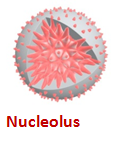 In some cases, Nucleolus takes about 25% of the space within the Nucleus. Its largest function is the assembly of ribosomes. On the whole, it is not yet fully understood. Although varying in shape, every cell is made up of the same parts (organelles).Usually oblong, a few of a hundred kinds in human body can take other shapes:
In some cases, Nucleolus takes about 25% of the space within the Nucleus. Its largest function is the assembly of ribosomes. On the whole, it is not yet fully understood. Although varying in shape, every cell is made up of the same parts (organelles).Usually oblong, a few of a hundred kinds in human body can take other shapes:  Outwardly a dead blob, cells are extremely complicated, humming with such activities, as almost impossible to understand, or even to imagine, in every detail.
Outwardly a dead blob, cells are extremely complicated, humming with such activities, as almost impossible to understand, or even to imagine, in every detail.  It is impossible to show all the parts of a cell, unless on several diagrams each drawn on a paper a few kilometers in diameter. Below is a simple illustration showing a few inner parts.
It is impossible to show all the parts of a cell, unless on several diagrams each drawn on a paper a few kilometers in diameter. Below is a simple illustration showing a few inner parts. 
- Nucleolus
- Nucleus
- Ribosome
- Vesicles
- Rough endoplasmic reticulum
- Golgi apparatus
- Cytoskeleton
- Smooth endoplasmic reticulum
- Mitochondria
- Vacuole
The inner structure is marvelously built. The best of scientific efforts cannot produce a cell’s model. Note the illustration below:  Cytoskeleton Above shows details of the structure of what is called as “Cytoskeleton” which helps maintain the shape of the cell, performing many other functions. The outer wall is the Cell Membrane which separates the cell from the outer world, while the innerstructure surrounds the nucleus from all sides. Inside is visible the Mitochondria, some 4000 of them in every cell. They supply power to the cell for chemical reactions, while the dots are the Ribosomes whic assembly proteins from Amino acids. There are millions of these in very cell. The cell is conducting thousands upon thousands of activities.
Cytoskeleton Above shows details of the structure of what is called as “Cytoskeleton” which helps maintain the shape of the cell, performing many other functions. The outer wall is the Cell Membrane which separates the cell from the outer world, while the innerstructure surrounds the nucleus from all sides. Inside is visible the Mitochondria, some 4000 of them in every cell. They supply power to the cell for chemical reactions, while the dots are the Ribosomes whic assembly proteins from Amino acids. There are millions of these in very cell. The cell is conducting thousands upon thousands of activities. 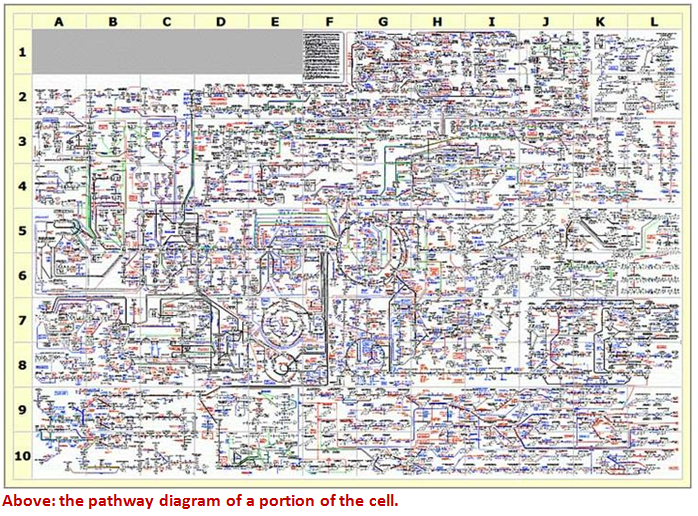 Replication The sign of life of any piece of matter is in its ability to replicate (self-divide). Duringreplication, every cell produces a copy of itself by itself: so that, with energy it receives from outside, one becomes two, two become four,four become eight, and so on.
Replication The sign of life of any piece of matter is in its ability to replicate (self-divide). Duringreplication, every cell produces a copy of itself by itself: so that, with energy it receives from outside, one becomes two, two become four,four become eight, and so on. 
 Every new cell – known as daughter cell – is, miraculously,a hundred percent true copy of the original – called the mother cell, the operation sometimes taking a few hours.
Every new cell – known as daughter cell – is, miraculously,a hundred percent true copy of the original – called the mother cell, the operation sometimes taking a few hours.  A human mother does not give birth to a child as a true copy of herself; but a daughter cell is a hundred percent copy of the mother cell. It is an astonishing performance, given the fact that there are 1014 atoms in a given cell, (i.e. 100,000,000,000,000). That is a staggering number, and the cell makes no error in copying every atom, and placing each one in its right place. If the cell makes a single error, it has to correct it with the help of its own machinery, but if it does not, the body is going to have problems. Amazingly, the cell keeps on with its other functions, while dividing itself into two. Food is broken during digestion into various components. Some of the components that enter into the cell through the membrane (outer wall) are amino acids, sugars, and fatty acids. Amino acids play the key role in the manufacture of proteins, which in turn are responsible for various functions within the cell.
A human mother does not give birth to a child as a true copy of herself; but a daughter cell is a hundred percent copy of the mother cell. It is an astonishing performance, given the fact that there are 1014 atoms in a given cell, (i.e. 100,000,000,000,000). That is a staggering number, and the cell makes no error in copying every atom, and placing each one in its right place. If the cell makes a single error, it has to correct it with the help of its own machinery, but if it does not, the body is going to have problems. Amazingly, the cell keeps on with its other functions, while dividing itself into two. Food is broken during digestion into various components. Some of the components that enter into the cell through the membrane (outer wall) are amino acids, sugars, and fatty acids. Amino acids play the key role in the manufacture of proteins, which in turn are responsible for various functions within the cell. 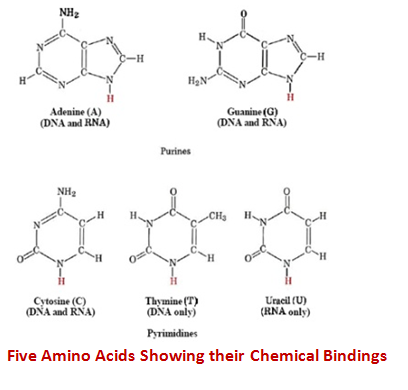 Cytoplasm (cytoskeleton, as mentioned above, is only its structure) fills the area around the nucleus. The nucleus primarily houses the DNA or the 23 pairs of chromosomes. DNA plays the key role in the first requirement of life: ability to replicate. DNA has the information of every detail of body structure in code. It is DNA which sends across instructions from the nucleus to the cytoplasm to manufacture proteins.
Cytoplasm (cytoskeleton, as mentioned above, is only its structure) fills the area around the nucleus. The nucleus primarily houses the DNA or the 23 pairs of chromosomes. DNA plays the key role in the first requirement of life: ability to replicate. DNA has the information of every detail of body structure in code. It is DNA which sends across instructions from the nucleus to the cytoplasm to manufacture proteins. 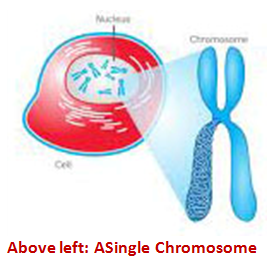 As discussed in earlier pages, the DNA consists of 23 pairs of chromosomes (of varying sizes).
As discussed in earlier pages, the DNA consists of 23 pairs of chromosomes (of varying sizes). 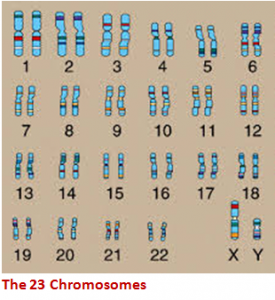 In the above illustration, (a) is a segment of a chromosome. Roughly, each ball is an atom.
In the above illustration, (a) is a segment of a chromosome. Roughly, each ball is an atom.  Above: a simplification of the chromosome segment. The A’s, C’s, G’s and T’s are tiny molecules supported by other molecules, called sugars and phosphates. The CG, GC, GC [of the middle rung] and molecules on both sides, would code for one of the 20 amino acids – if it happens to be within a gene. The A or T or others would look like this when expanded.
Above: a simplification of the chromosome segment. The A’s, C’s, G’s and T’s are tiny molecules supported by other molecules, called sugars and phosphates. The CG, GC, GC [of the middle rung] and molecules on both sides, would code for one of the 20 amino acids – if it happens to be within a gene. The A or T or others would look like this when expanded. 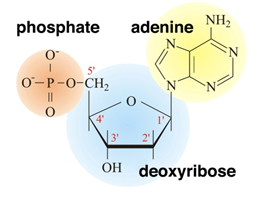 The above is called a nucleotide. A single nucleotide consists of a base, a five-carbon sugar and a phosphate group, which consists of phosphorous and oxygen. The base consists of adenine (A) [as in above illustration), thymine (T), guanine (G) or cytosine (C), while the sugar is either ribose or deoxyribose.
The above is called a nucleotide. A single nucleotide consists of a base, a five-carbon sugar and a phosphate group, which consists of phosphorous and oxygen. The base consists of adenine (A) [as in above illustration), thymine (T), guanine (G) or cytosine (C), while the sugar is either ribose or deoxyribose. 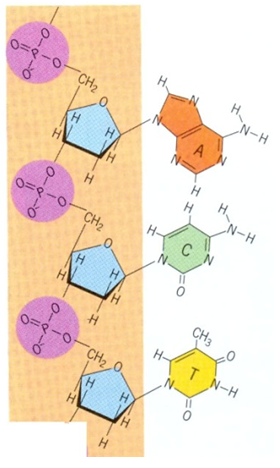 In the above illustration, the unshaded area is known as the base. Each of the 3blocksis a nucleotide,and, the three put togetherwould code for an amino acid.
In the above illustration, the unshaded area is known as the base. Each of the 3blocksis a nucleotide,and, the three put togetherwould code for an amino acid. 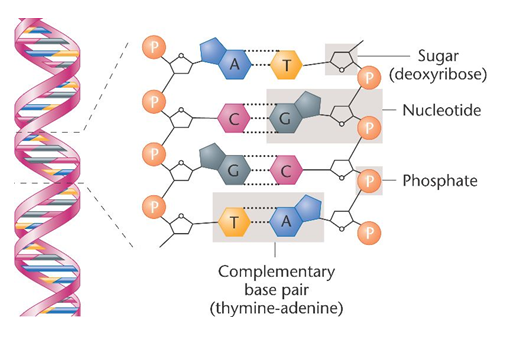 The illustration above shows four base pairs; i.e. this segment of the DNA (uncoiled here) shows 8 nucleotides. However, while the DNA replicates (self-divides), the DNA coil is split (by a cellular machinery) at the positions marked in dotted lines above, for each coil to be replicated (by another machinery). Together, a base, sugar, and phosphate, are called a nucleotide. Nucleotides are arranged in two long strands that form a spiral called a double helix. The structure of the double helix (when uncoiled) is somewhat like a ladder, with the base pairs forming the ladder’s rungs and the sugar and phosphate molecules forming the vertical sidepieces of the ladder
The illustration above shows four base pairs; i.e. this segment of the DNA (uncoiled here) shows 8 nucleotides. However, while the DNA replicates (self-divides), the DNA coil is split (by a cellular machinery) at the positions marked in dotted lines above, for each coil to be replicated (by another machinery). Together, a base, sugar, and phosphate, are called a nucleotide. Nucleotides are arranged in two long strands that form a spiral called a double helix. The structure of the double helix (when uncoiled) is somewhat like a ladder, with the base pairs forming the ladder’s rungs and the sugar and phosphate molecules forming the vertical sidepieces of the ladder  The above is a simplified version. The area marked as a gene, is a simplicity. The gene can be very long, and, further, a gene could be a segment of the base pairsat one point, another segment further up, yet another somewhere else, or even a segment on another of the 23 chromosomes; these segments when joined together would be a gene. The cell machinery knows how to join them when required to make a gene. To sum up, in a DNA coil there are four nucleotides, no more. They are termed A,C,T, and G. And, when one nucleotide molecule is chemically linked to another on the opposite side, the two are called a base pair. There are altogether 3 billion base pairs in the DNA of the humans. The same number is found in in every cell, of every human being.
The above is a simplified version. The area marked as a gene, is a simplicity. The gene can be very long, and, further, a gene could be a segment of the base pairsat one point, another segment further up, yet another somewhere else, or even a segment on another of the 23 chromosomes; these segments when joined together would be a gene. The cell machinery knows how to join them when required to make a gene. To sum up, in a DNA coil there are four nucleotides, no more. They are termed A,C,T, and G. And, when one nucleotide molecule is chemically linked to another on the opposite side, the two are called a base pair. There are altogether 3 billion base pairs in the DNA of the humans. The same number is found in in every cell, of every human being.  The above A’s, C’s, G’s and T’s, a segment of a chromosome, could be a gene, coding for a protein. There are some 22,000 genes in the chromosomes. For a long time it was thought that out of the 3 billion base pairs, the non-coding ones, about 98%, did not code for anything, and so were junk. But latest research indicates that they seem to be playingsome role. The chromosomes are not visible, not even through a microscope. They become visible through microscopes when the cell is replicating. The order, or sequence, of these bases determines the information available for building and maintaining an organism, similar to the way in which letters or the alphabets appear in a certain order to form words and sentences. We shall next turn – Allah willing – to what it means to say that evolution works at the genetic level.
The above A’s, C’s, G’s and T’s, a segment of a chromosome, could be a gene, coding for a protein. There are some 22,000 genes in the chromosomes. For a long time it was thought that out of the 3 billion base pairs, the non-coding ones, about 98%, did not code for anything, and so were junk. But latest research indicates that they seem to be playingsome role. The chromosomes are not visible, not even through a microscope. They become visible through microscopes when the cell is replicating. The order, or sequence, of these bases determines the information available for building and maintaining an organism, similar to the way in which letters or the alphabets appear in a certain order to form words and sentences. We shall next turn – Allah willing – to what it means to say that evolution works at the genetic level.

